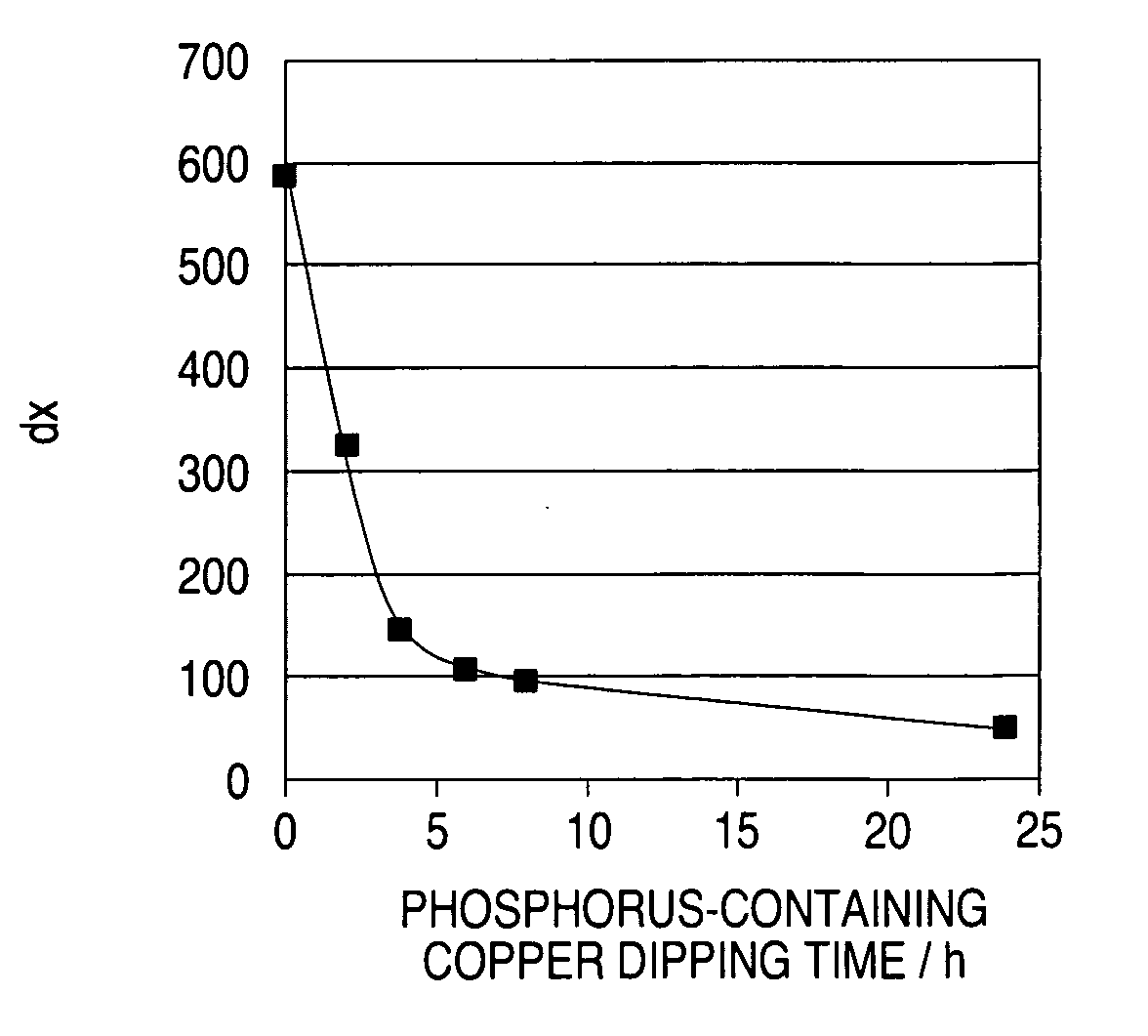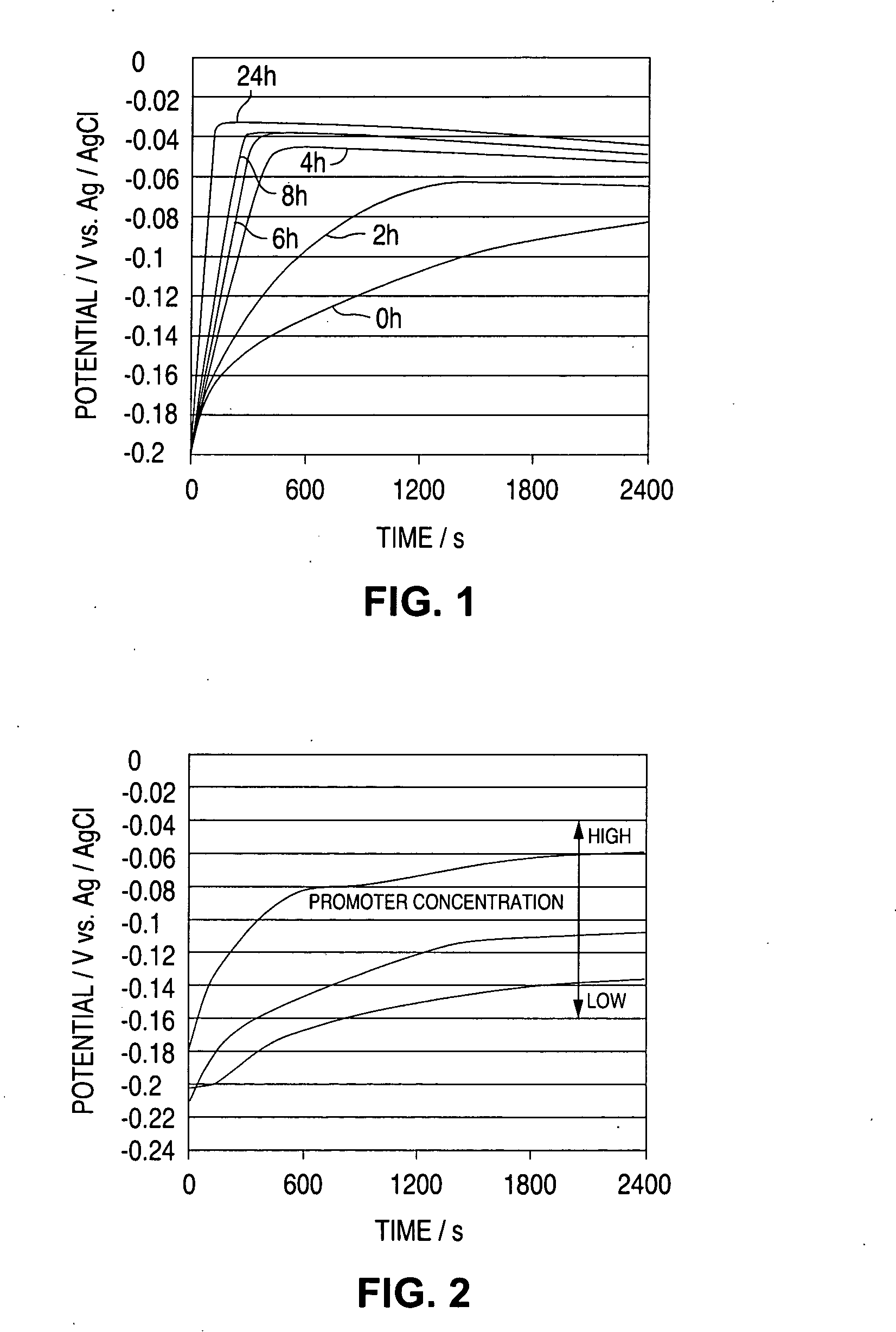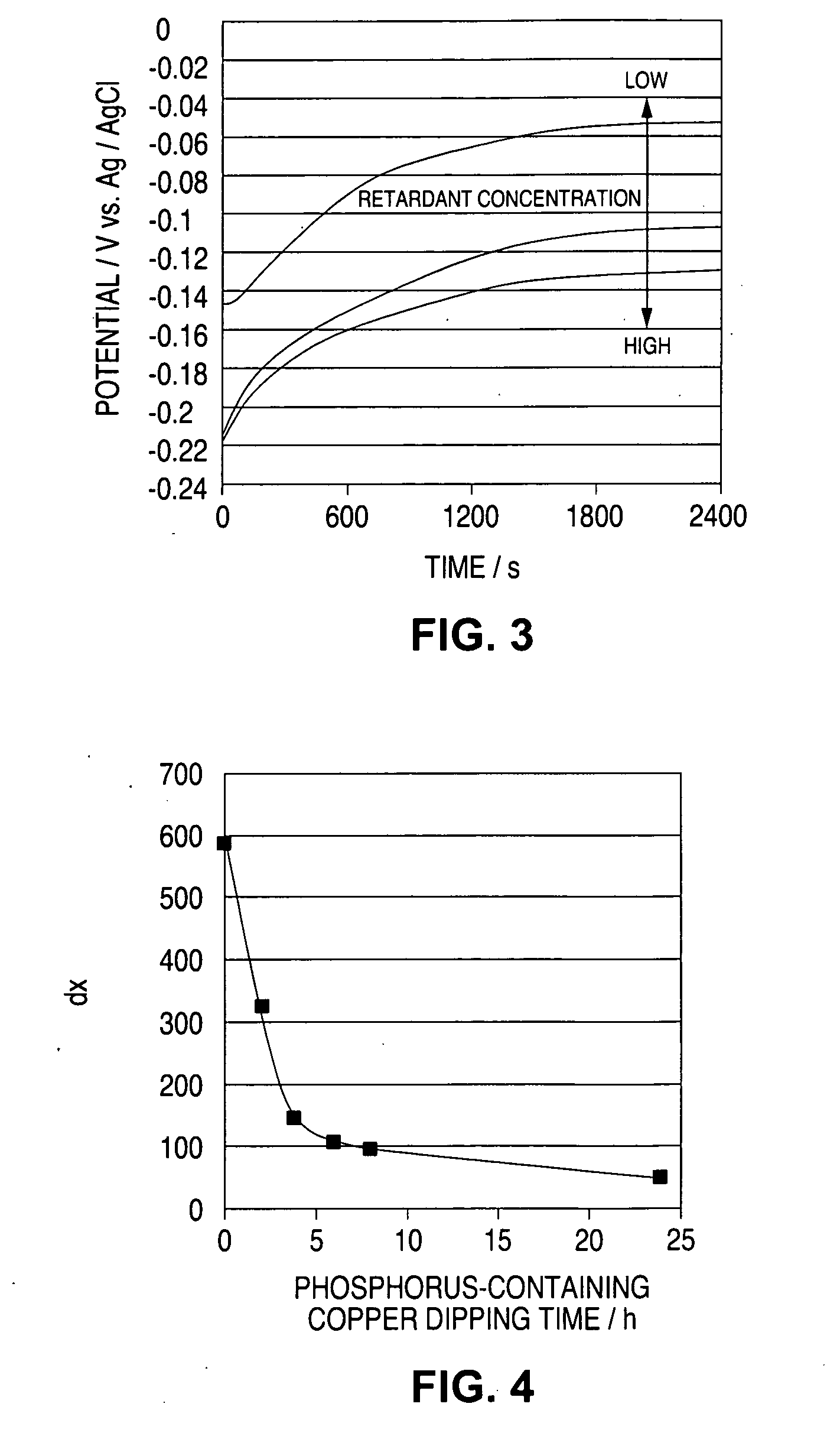Method for analyzing electrolytic copper plating solution, and analyzing device therefor and production method for semi-conductor product
a technology of electrolytic copper and plating solution, which is applied in the direction of semiconductor/solid-state device testing/measurement, instruments, and material electrochemical variables, can solve the problems of worsening fillability of plating solution, and achieve the effect of satisfying fillability
- Summary
- Abstract
- Description
- Claims
- Application Information
AI Technical Summary
Benefits of technology
Problems solved by technology
Method used
Image
Examples
example 1
[0086] The invention of claims 1 to 6 is described in detail with reference to the following Examples 1 to 3. The apparatus used has the constitution as in FIG. 6. 100 ml of a plating solution of which the additive concentration was controlled through CVS. analysis (plating solution sample 5) was sampled from a via-filling copper plating bath actually in service, and this was put into a beaker and set on a stand 6 for its exclusive use. However, since the plating solution sample changes while left, it was used for the test within 2 days after its sampling.
[0087] As the reference electrode 2, used was a two-layer-structured Ag / AgCl reference electrode (the external solution is 10 vol. % H2SO4; the internal solution is 0. lmol / liter KCl; and Ag / AgCl is in the internal solution, 10 vol. % H2SO4); as the working electrode 3, used was a platinum rotary electrode (electrode area 4 πmm2); and as the counter electrode 4, used was a copper column (diameter 8 mm).
[0088] The electric current...
example 2
[0090] From a via-filling copper plating bath actually in service, the plating solution was sampled at intervals of 2 months, and subjected to constant-current potential measurement under the same condition as in Example 1. The additive concentration of the solution was controlled to be constant through CVS analysis.
[0091]FIG. 13 shows the result of measurement of the constant-current potential of a fresh solution having the same additive concentration as that of the above solution, and that of the plating solution sampled at intervals of 2 months. FIG. 14 shows dx of the result of measurement of the constant-current potential inFIG. 13. From FIGS. 13 and 14, it is understood that, even though the additive concentration was controlled to be constant through CVS analysis, the fillability still lowered.
example 3
[0092] A fresh solution was prepared and divided into two. Nothing was put into one; and a phosphorus-containing copper plate with a controlled area of 100 cm2 / liter was put into the other and statically left as it was for 48 hours. Using the two solutions, a via-hole having a diameter of 100 μm and a depth of 75 μm was plated. With the former solution, the via-hole was filled, but not with the latter.
[0093] Both solutions were subjected to CVS analysis to determine the promoter concentration and the retardant concentration therein, but the difference between the two was only on a level of error. From this, it may be said that the additive concentration control through CVS analysis is not enough to judge the via fillability.
PUM
 Login to View More
Login to View More Abstract
Description
Claims
Application Information
 Login to View More
Login to View More - R&D
- Intellectual Property
- Life Sciences
- Materials
- Tech Scout
- Unparalleled Data Quality
- Higher Quality Content
- 60% Fewer Hallucinations
Browse by: Latest US Patents, China's latest patents, Technical Efficacy Thesaurus, Application Domain, Technology Topic, Popular Technical Reports.
© 2025 PatSnap. All rights reserved.Legal|Privacy policy|Modern Slavery Act Transparency Statement|Sitemap|About US| Contact US: help@patsnap.com



